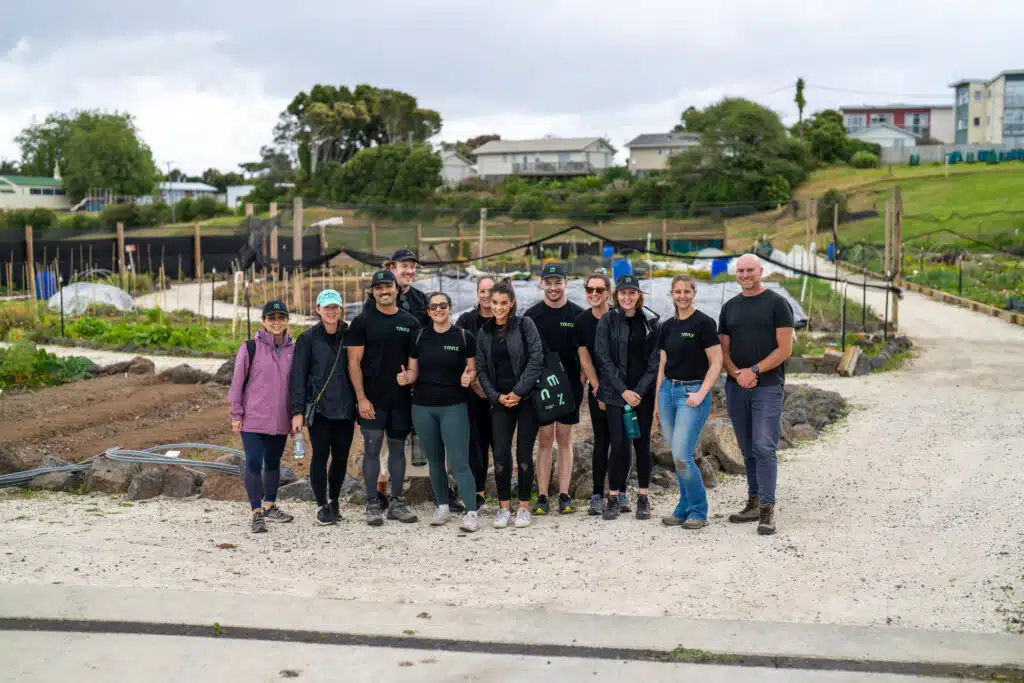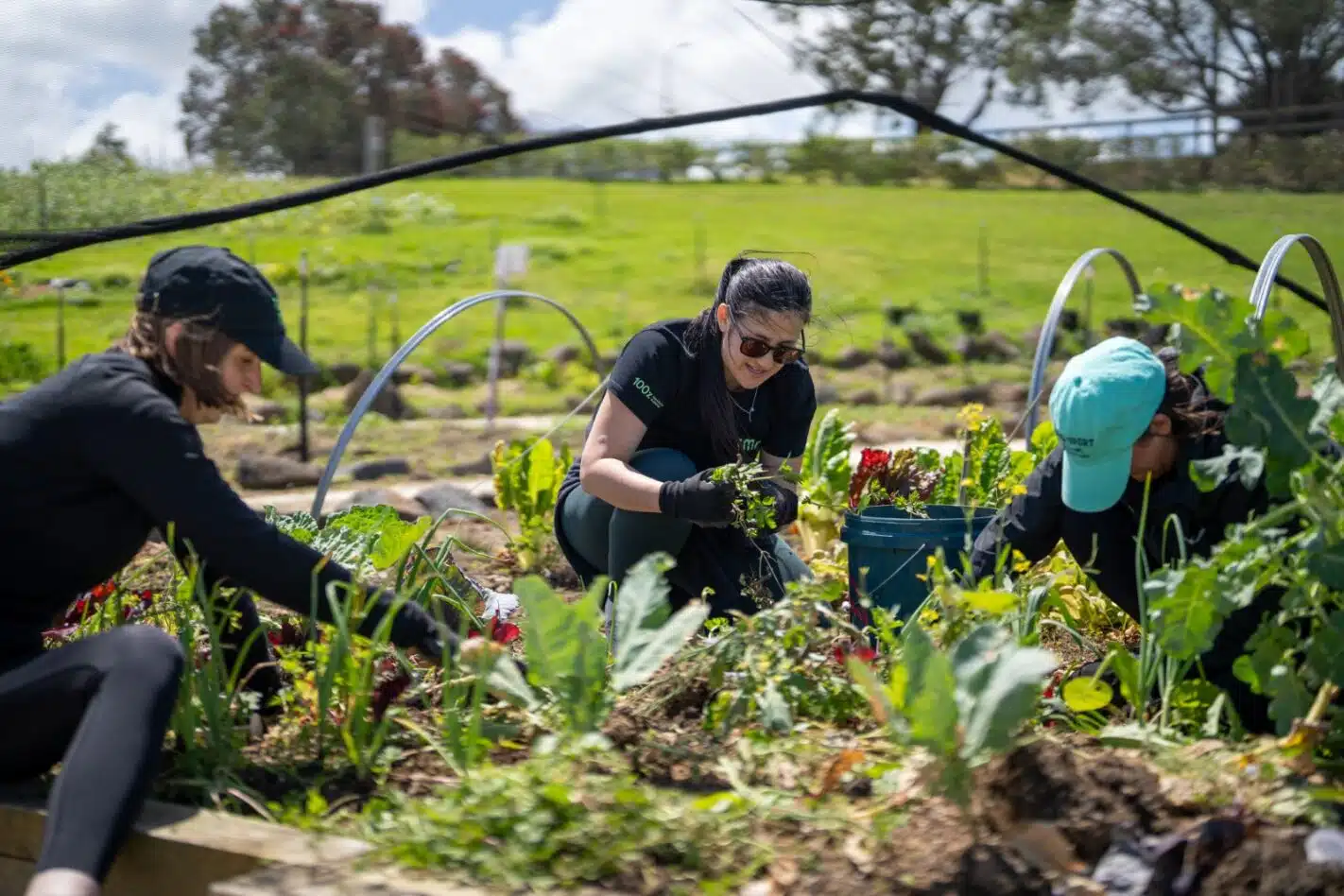Utilising future tax to create working capital in the real estate industry
Working scenario: Bay Vista Real Estate
The situation
Emma runs a real estate agency in Auckland with 12 agents. The business experiences significant income fluctuations, with summer months (December-March) typically generating 60% of annual revenue.
The challenge
During the 2024-25 tax year, Bay Vista faced:
- peak income during the summer months
- large commission payments to agents in December/ January
- lower winter income but consistent overhead costs
- two of their provisional tax payments due during quieter months
- a preference for flexibility to withdraw funds if new opportunities arose.
The solution
Emma chose a TMNZ solution which allowed her to:
- delay payment of provisional tax due in August until a time when the business was earning revenue
- deposit $180,000 during the peak summer months:
- $100,000 in December
- $80,000 in January
- earn interest on deposited funds
- maintain flexibility to withdraw funds for a new investment opportunity
- ask TMNZ to allocate tax to the correct payment dates once the business’s income tax liability is known.
The results
Emma continued her business growth plans, while she also:
- earned interest on deposits in excess of what her bank was offering
- better matched tax payments to income patterns
- reduced her stress during quieter months
- protected her working capital during winter
- simplified the tax planning process
- created a tax savings discipline for the business
- rested easy knowing no IRD interest or penalties had been incurred.
Going forward, the business can use TMNZ annually as part of growth plans and cashflow strategy.
Your key takeaway
By matching peak periods with future planning, you can earn interest and create a facility to fund business growth when opportunities arise.
For more on how our tax solutions can help your business, go here.
*This scenario is a fictional example created to demonstrate how tax management solutions work to meet unique circumstances in a range of industries.
Managing uncertainty in tax and costs in the construction industry
Working scenario: Wilson Construction.
The situation
James operates a commercial construction company in Hamilton with 45 employees. The company experiences significant variations in monthly income based on project completion milestones. If clients pay late, this further stresses cashflow.
The challenge
For the 2024-25 tax year, Wilson Construction faced:
- uncertain provisional tax obligations due to uncertainty on when income will be earned
- a large variation between estimated profit ($1.8M) and actual profit ($2.9M) when a project was delivered ahead of schedule in the 2025 financial year, rather than the 2026 financial year as expected
- cashflow regularly tied up in materials and labour costs
- Inland Revenue’s prescribed instalment dates that were not aligned with project payment schedules.
The solution
James opted to manage their tax payments through TMNZ because:
- TMNZ allowed flexible payment dates throughout the year
- the company could make 20+ smaller payments instead of 3 large instalments
- they made payments after receiving project milestone payments
- there was no need to estimate their annual tax liability upfront
- they could change payment amounts at any time based on actual cashflow.
The company made 24 payments ranging from $15,000 to $45,000. They timed payments to follow major project milestone payments and adjusted payment sizes based on project profitability. The total tax paid was $812,000.
The results
James enjoyed better cashflow management, as well as:
- reduced stress around provisional tax deadlines
- no Use of Money Interest charges or late payment penalties
- maintaining a strong working capital position
- better aligned tax payments with business income patterns
- avoiding drawing on construction bonds or expensive bank facilities.
Your key takeaway
Using TMNZ solutions, and seasonal financial planning, tax obligations can be managed to align with business and project outcomes, not IRD deadlines.
For more on how our tax finance solutions can help your business, go here.
*This scenario is a fictional example created to demonstrate how tax management solutions work to meet unique circumstances in a range of industries.
Reducing the cost of funds for a dairy farm
Working scenario: Henderson Dairy Farm.
The situation
The Henderson family operates a 650-cow dairy farm in Southland. They recently invested in a new milking shed automation system and expanded their herd, creating irregular cash flow patterns during the upgrade period.
The challenge
In the 2024-25 season, they faced:
- $280,000 investment in automation equipment
- an additional $150,000 for herd expansion
- a provisional tax payment of $165,000 due March 2025
- expected lower income for the next few months, picking up in October
- bank facilities already used for farm improvements
- needing to maintain working capital for winter feed.
The solution
The Henderson’s worked with TMNZ to:
- finance the full $165,000 provisional tax payment
- secure 5.6% interest rate (vs IRD’s 10.88%)
- structure repayment to align with improved monthly income
- use TMNZ’s tax finance solution as an alternative funding source.
The results
The Henderson’s saved approximately $4,950 in interest compared to IRD and bank overdraft rates. They also:
- preserved their working capital for winter feed purchases
- maintained a good standing with existing bank
- protected their new automation investment
- avoided selling stock at suboptimal time
- better aligned provisional tax payments with their income cycle.
Your key takeaway
By creating a long-term plan to address variabilities in cashflow, you can plan ahead and secure lower interest on funds to cover costs.
For more on how our tax solutions can help your business, go here.
*This scenario is a fictional example created to demonstrate how tax management solutions work to meet unique circumstances in a range of industries.
Are you in a tight spot with your company tax?
Fibre Cement Solutions Ltd is a family-run business, owned by Rachel Osborn and Graeme Zimmerman, who bring 25 years of construction industry experience with them. As a leading supplier of fibre cement board in New Zealand, they work with several construction partners across the country and after expanding, they have distribution centres in both Auckland and Christchurch.
A few years into business, Rachel, who managed the finances of Fibre Cement Solutions, found herself in a tight spot. It was the middle of COVID-19, and she hadn’t been advised of their upcoming tax liabilities and deadlines. Like many smaller businesses, especially those in the construction industry, the business was experiencing fluctuating cashflow, despite in their case, fantastic growth. As a result, Rachel found herself struggling to pay the unexpected company tax on time, now facing the risk of hefty penalty from Inland Revenue (IR).
Her new accountant suggested she look into tax pooling and made the introduction to Tax Management New Zealand (TMNZ).
And that’s where TMNZ stepped into help.
TMNZ can work directly with any business (or with their accountant) to find a better solution for provisional tax.
Rachel contacted TMNZ to sign up to their IR-approved service, which gives businesses up to 22 months to pay their company tax without incurring heavy penalties. TMNZ provided Rachel with flexible payment options, charging only a small interest fee for the service, much smaller than IR or bank interest rates. And when her tax payments were made, TMNZ transferred these to IR, as date-stamped payments. Job done.
Rachel's flexible payment plan with TMNZ allowed her to make payments on dates that suited the business’ cashflow, and payment amounts that worked for her budget. This solution allowed the business to stay compliant with IR regulations, avoid fees, and manage tax obligations in a way that better suited the business. Meaning Fibre Cement Solutions could continue to pay staff, meet sales targets and continue to grow.
After her initial positive experience with TMNZ, Rachel now monitors the company's financial position monthly. She loves the option to pay TMNZ instead of Inland Revenue directly, allowing her to reinvest funds into the business for growth. Rachel says:
“If you are ever in a tight spot re paying your company tax like we were, there is an incredible solution that TMNZ offer… It is so flexible and user friendly and keeps you out of trouble with the IRD!”
“The Team at TMNZ are extremely friendly and can explain tax in layman's terms which I really loved. I cannot recommend them highly enough”
To learn more about how TMNZ can help your business manage tax payments and gain cashflow flexibility, contact one of our friendly team members here or speak with your accountant about setting up a flexible cashflow arrangement allowing you to choose when you pay your tax.
Reducing risk: 28 October provisional tax
The current market conditions are making it even trickier to work out how much provisional tax to pay, not to mention finding the funds to pay it. That’s why, with 28 October approaching, we’re going to offer some ways to reduce your risk in this uncertain environment.
TMNZ offers options to defer this payment for up to 19 months – without having to worry about any nasty consequence from Inland Revenue (IR). We also look at the pros and cons of the respective options available to calculate your payment.
For taxpayers with a 31 March balance date who file their GST returns every six months, 28 October will be the first of two provisional tax instalments payable for the 2024-25 income year. It is also the first of three instalments payable for those with a 31 May year-end who file their GST returns monthly or every two months. This makes it a major payment date for many businesses in the agricultural sector.
What should you pay?
While working out the liability to the exact cent is far from easy – even at the best of times – it does not change the fact you generally have two options when it comes to calculating your provisional tax payments. They are:
- Pay based on an uplift of an income tax liability from a previous year. This is known as using the standard uplift method.
- Pay based on your current expectation of profitability for the 2024-25 income year.
Paying based on an uplift of a prior year
If you travel down this route, the provisional tax payable for the 2024-25 income year will be based on either:
- Your 2024 income tax liability plus five percent; or
- Your 2023 income tax liability plus 10 percent (if your accountant has not filed your 2024 tax return and does not legally have to do so until 31 March 2025).
The benefit of paying uplift means you will not incur IR interest (UOMI) – from 28 October 2024 if it turns out you have not paid enough provisional tax to satisfy the liability for the year.
Given this is the date which carries the longest exposure to UOMI, sticking with uplift may be a sound insurance policy if you feel a similar result to last year is on the cards or want to play it safe in this uncertain environment to ensure you are not caught short later if business picks up down the track. And besides, if things turn to custard, you can always revise your payment downwards later to account for any overpayment on 28 October once the picture starts to become clearer.
However, the downside of paying on uplift means you may end up making a provisional tax payment that is not reflective of your current earnings (or more than your expected profitability for the year). From a cashflow perspective, that can be problematic as generally you will not be able to get your overpaid tax back from IR until after you have filed your 2024-25 income tax return.
Paying based on forecast profitability
Indeed, there’s no denying many New Zealand businesses have been doing it tough and are forecasting lower profits. As such, you may be considering making a payment on 28 October that is more in line with how you are currently performing – especially if your business earnings have been significantly impacted.
On plus side, you won’t be paying any more provisional tax than you need to if you choose to do this. That will certainly offer a cashflow benefit by allowing you to keep money in your business.
You can always revise payments upward or downward depending on how everything unfolds. However, it means you run the risk of incurring UOMI from 28 October 2024 if you experience a sudden or late upswing in profitability during the backend of the 2024-25 income year and provisional tax paid on this dates turns out to be less than the amount required. That said, there is a way to reduce the interest cost on underpaid tax. More on that shortly.
Do you need to file an estimate with IR to pay less than uplift?
We get this question a lot. You do not need to file an estimate with IRD if you plan on paying provisional tax based on your expected profitability for the 2024-25 income year. There is no legislative requirement to do so. Just make your payment on 28 October as you see fit.
Tax pooling can help if you cannot pay, or it turns out you have not paid enough
No matter the basis you utilise to calculate your 28 October payment, IR-approved TMNZ can offer some assistance, with payment options for taxpayers who:
- Do not or cannot make their payment on the prescribed IR payment date.
- Want to eliminate IR interest and late payment penalties if they underpay their tax.
Pay 28 October provisional tax when it suits you
Where preserving cash is of primary importance, you can use TMNZ to defer an upcoming provisional tax payment for up to 19 months, without facing UOMI and late payment penalties.
TMNZ will make a payment to IR on your behalf on 28 October. You then pay TMNZ later. This can be once the liability for the 2024-25 income year is known or when your cashflow situation improves. The amount owed can also be paid in instalments.
You would have until mid-June 2026 to pay what you owe with Flexitax if you have a 7 April terminal tax date. Check with your accountant if you are unsure what your terminal tax date is. There is some interest to pay to TMNZ – but this is significantly cheaper than IRD’s UOMI rate.
Reduce the cost of underpaid tax
Tax pooling is not just for those who are struggling to pay IR on time.
Where forecasting profitability for the 2024-25 income year is proving challenging or you would simply prefer to make your provisional tax payments based on how your business is performing by reviewing your position at each instalment date, you can rest easy knowing that TMNZ can help in the event you get your payments wrong and wind up with additional tax to pay. That’s because you can use TMNZ to make significant savings on the IR interest cost you face and wipe late payment penalties when you underpay tax.
How? TMNZ lets you apply provisional tax that was originally paid to the tax department on the date(s) it was due against your liability. As such, IR treats it as if you paid on time once it processes this tax pooling transaction. This eliminates any late payment penalties. You have up to 75 days from your terminal tax date for the 2024-25 income year to pay any underpaid provisional tax with TMNZ. It’s a useful option to pull out of your back pocket once you determine your actual position and file your return. The savings TMNZ offers on underpaid tax can be significant.
Speak with your accountant
As always, we recommend you speak with and direct any questions you have about your 28 October provisional tax payment to your accountant. If you don’t have an accountant, check out the directory of firms that TMNZ works alongside. You can filter this list by specialist topic or search for a tax agent in your region.
Tax Finance: An alternative funding source
Growing a business is hard yakka. More specifically, it costs money.
And therein lies a problem for many small business owners: Cashflow. In fact, it’s not a problem. It’s a major problem. According to Xero’s Small Business Insights, New Zealand business sales fell by over 8% for the year ending June 2024.
Now granted, there are several choices available when it comes to accessing funds you need to. A bank loan, overdraft, credit card and an unsecured loan are just some.
But again, it’s not that simple. There can be a few hoops to jump through as part of the approval process and you will likely have to use assets as collateral, often using your personal house (or the house of a shareholder, for example) as security to get a lower cost of funds. If there is no approval or credit review process, then chances are you will be up for double-digit interest rates. Ouch.
However, there is another option. It’s one you probably have not heard about either.
The other option – Tax Finance
Did you know that your provisional tax payments are also a source of finance? Yes, that’s right – provisional tax. That thing many small business owners loathe paying. That thing that places undue pressure on, you guessed it, cashflow.
Allow us to explain.
An IR-approved tax pooling provider such as TMNZ offers a payment option known as Tax Finance. It lets you free up working capital by deferring a provisional tax payment to a later date, without incurring Inland Revenue (IR) interest of 9.89% (as at 8 May 2025) and late payment penalties.
For an upfront finance fee, you can choose a time in the future you wish to pay what you owe. Essentially, this allows you to use the money you have set aside for income tax more productively.
The finance fee or interest you pay to TMNZ is:
- similar to the interest rate charged by a bank for a residential mortgage; and
- tax-deductible.
So, you could also use the money set aside to repay your mortgage earlier, thereby reducing non-deductible interest costs charged by the banks on your personal house. The cost of Tax Finance is cheaper than using your business overdraft or an unsecured loan. Approval is guaranteed. Moreover, you do not have to provide any security.
Even better, if you already have paid tax deposits into the TMNZ tax pool, you can finance them back out while keeping the original tax date. We call this Tax Drawdown.
Altogether, this effectively treats your tax payments with the TMNZ tax pool as a revolving credit facility.
Who might Tax Finance suit?
Tax Finance will suit those who:
- are looking for funding that does not affect other lines of credit or their General Security Agreement with their bank
- want to keep headroom in their existing lending facilities
- do not wish to go through the rigmarole of the normal lending process
- want a fixed interest cost
- feel there is more to gain financially from being able to keep money in their business instead of paying income tax.
How much does Tax Finance cost?
It depends. The finance fee is based on the amount of tax due and the future date you wish to pay.
As mentioned above, the TMNZ finance fees are similar to the home loan mortgage interest rates charged by banks.
For instance, at current rates¹ it only costs $335 to defer a $10,000 provisional tax payment for six months. That works out to be approximately 6.70%pa².
How does Tax Finance work?
Here’s how Tax Finance works in a nutshell:
- Ahead of your provisional tax payment date, you tell TMNZ the amount of tax you want to finance, the future date you want to finance that to (e.g., the date you think you may be able to pay the tax amount) and pay the finance fee based on the quote TMNZ provides. TMNZ arranges for a bank to make a payment for you in its tax pool account at IR on the provisional tax date. This payment is date-stamped.
- At the agreed upon future date (known as the maturity date), you have a few options:
- settle the full tax amount by paying TMNZ; or
- roll over the financed amount for another period of time – in this case you can get a quote for a further finance fee to pay based on how long you want to finance for;
- settle part of the financed tax and roll over the remaining part;
- settle only the amount you need (if your actual tax liability has reduced).
- Upon settlement of the financed tax, ownership of the tax deposit made by the bank changes to become owned by you and sits in your tax pooling account with TMNZ. You can then request TMNZ to transfer the tax payment it is holding on your behalf to your IR account to clear your tax liability. Once they’ve processed the transfer, IR treats this tax amount as if the tax was paid on your original provisional tax date. It will also reverse any interest and late payment penalties showing on your account.
In the event you choose the fourth bullet in step 2 above, there is no obligation on you for the remaining financed tax (even if you decide to not settle any of the financed tax). You can simply walk away, no questions asked. Or you can ask us to try and sell the residual unused financed amount for you and earn you some interest return, effectively getting some of your finance fee back.
TMNZ offers a competitive rate for Tax Finance. For more information, get in touch.
¹ At at August 2024
² The published ANZ 6 month residential mortgage rate as at 7 August 2024 is 6.99%pa if you have at least 80% LVR.
An accountants’ guide to TMNZ’s Dashboard
We’re excited to share with you: Tax Pooling – An accountants’ guide to TMNZ’s Dashboard. In this session, you’ll learn how to navigate our TMNZ dashboard for setting up accounts, creating tax pooling arrangements, and taking advantage of features like Tax Swaps, and Group Optimiser.
What you’ll learn
Account setup and management:
- updating personal information
- setting up client accounts (taxpayer accounts)
- accessing a firm-wide view.
Tax pooling:
- setting up a tax pooling arrangement
- Tax Swaps
- Group Optimiser.
This content is for general information purposes only and should not be used as a substitute for consultation with our team of specialists.
The interest rates mentioned in our webinars were accurate at the time of original recording. Please note that IRD interest rates change over time. Always refer to current official IRD rates for the most up-to-date information.
Book a tax pooling overview for your business
Is tax pooling the right solution for you? Every business we work with has different needs. Book an overview with one of our tax pooling specialists to find out how we can support you.
How TMNZ tech takes the pain out of tax
As New Zealand’s first ever tax pool, we’re proud of our long history of innovation. It’s at the heart of everything we do, and we’re always looking for new ways to simplify tax.
Technology has been at the forefront of our efforts, whether it’s rolling out new features for our customers, adding new functionality online, or partnering with forward-thinking digital platforms.
Recently, we’ve rolled out some amazing tools to help our customers and their accountants easily manage income tax.
Discover our top tech solutions to help you take the pain out of tax time, including tools to cut down on admin, share data between platforms, and get instant information on things like tax swaps.
Direct Inland Revenue Integration
TMNZ’s online dashboard is fully integrated with Inland Revenue (IR), meaning taxpayer information held by IR can be seamlessly shared on our platform, to make accountants lives easier.
In the past, accountants had to deal with multiple systems and spreadsheets to find accurate IR information. Integration means this admin work is no longer required.
Inland Revenue and TMNZ systems are directly connected so that key IR information is automatically populated on our dashboard. All relevant IR data, including Residual Income Tax figures, filing dates, and direct IR transactions appear on the TMNZ dashboard once you’ve logged in.
Thanks to IR integration, accountants can save time and reduce admin work. Direct IR integration also removes the risk of manual errors as clients populate information from one platform to another, making the process much more efficient.
IR information is fed into our calculator to help you determine your (or your client’s) tax position as quickly as possible.
Kathleen Payne, Partnerships Director at TMNZ, says:
“Following IR integration, all the data you need for your calculations goes straight onto our dashboard. All you have to do is put in the current year’s position that IR might not know yet, and everything is calculated without further data entry.”
If clients need any assistance with our direct IR integration, then TMNZ’s friendly support team is on hand to help. And you can find out more about IR integration here.
TaxLab integration
TMNZ is now fully integrated with TaxLab, bringing New Zealand’s leading accountants a seamless, all-in-one solution for managing tax payments to enhance provisional tax productivity, so your practice can grow.
We know that juggling multiple platforms eats into valuable time that could be better spent elsewhere – and manual processes can create costly compliance issues, for you and your clients.
Our new TaxLlab integration eliminates these pain points through automated provisional tax workflows, real-time payment visibility and bulk processing. With the click of a button you can calculate complex tax positions, view payment statuses and send reminders and tax pooling quotes, all from the one platform.
“Accountants will get a complete picture of all TMNZ transactions sitting against their clients’ tax year,” Kathleen says.
Like the IRD integration, the setup couldn’t be simpler:
- log in to TaxLab, go to ‘Settings’, and add TMNZ as a connection
- you’ll then be directed to TMNZ to log in and confirm
- from there, you’ll be able to view TMNZ tax pooling information, including a full history of purchases, deposits, transfers, and tax payments.
Integration with Taxlab reduces the time and effort spent sharing information across the two platforms, giving tax agents even more time for their valuable client work.

Group Optimiser
If you’re a busy accountant in public practice looking to manage the tax year for groups of clients, TMNZ’s Group Optimiser tool is tailor-made for you.
This innovative feature enables accountants to calculate the position of several taxpayers and create multiple transactions at once.
Used alongside IR integration, Group Optimiser can make tax calculations even simpler.
Kathleen adds:
“Instead of having to prepare spreadsheets for each member in a group and then decide who has overpaid or underpaid tax, agents can use our calculator to enter a small amount of information. Then, at the click of a button, Group Optimiser calculates how to use the tax across the group in the most effective way.”
Group Optimser is ready and waiting on the TMNZ dashboard. All you need to do is log in.
Upcoming Deadlines
The Upcoming Deadlines function on the TMNZ dashboard is another of our top tech features.
For accountants managing several tax pooling clients, the Upcoming Deadlines feature can be used to track taxpayers ahead of key dates.
Offering total visibility over client tax positions as deadlines approach, the tool suggests prompts and actions to finalise the year.
“It also gives accountants a control list to work through their clients and ensure everything has been finalised,” Kathleen says. “It’s a workflow and control function and will remind advisers about everything they need to do for their clients.”
Automated Tax Swaps
TMNZ’s automated Tax Swaps is our latest dashboard feature, enabling clients to get instant quotes and process swaps below the threshold*.
Tax Swaps allow clients to even out their provisional tax payments if they have overpaid on one date and underpaid on another, saving on IR interest costs.
With our automated Tax Swap service, clients will benefit from faster, more efficient processing
The best part? The Tax Swap function is DIY.
“It’s a self-service system,” Kathleen explains. “If a client knows the swap they want to do, our system will automatically say, ‘Yes, you can do it, and this is the interest you’ll get’. You won’t have to interact with us at TMNZ. You can do-it-yourself.”
“It’s super efficient,” she adds. “Clients will have certainty of the outcome, they’ll know how much interest they’ll have to pay, or what they can earn, in an instant.
“At TMNZ, we’re all about flexibility, and empowering our customers to make decisions at a time that suits them.”
Automated Tax Swaps launched recently, following our pilot with TMNZ’s Early Adopter community in April.
Become an Early Adopter
Are you part of TMNZ’s Early Adopter community, who gets first access to all our latest tech features?
Early Adopters enjoy the benefits of our new products and enhancements before anyone else, with support and training to help you make the most of new tools.
As an Early Adopter, you can share feedback and experiences to help us develop the best tech possible for accountants and clients.
“We love working with people to create the best tax solutions possible,” Kathleen adds. “Our Early Adopters are highly motivated, creative people who want to help us get even better.”
If you’re a tech savvy tax pooling user in an accounting firm, become an Early Adopter in a few simple steps:
- login to your dashboard
- Select your firm
- select ‘Early Adopter Programme’, from the left-hand menu
- review and accept the Terms and Conditions presented
- click the ‘Sign up’ button.
To learn more about TMNZ’s latest tech developments, head to our Innovative Tax Technology page or contact our support team today.
*the threshold is subject to change depending on market conditions.
TMNZ Board announces new Chief Executive
TMNZ is thrilled to announce the appointment of Matt Edwards as CEO, effective 1 May 2024.
Matt joins TMNZ following 16 years of strategic leadership and entrepreneurial experience, working in the FinTech sector in the United Kingdom and across Europe.
The appointment signals the next chapter in TMNZ’s journey, as the purpose-led tax pooling originators and market leaders look to help more New Zealand businesses, in exciting new ways.
Board Director and TMNZ Founder Ian Kuperus said:
“We’re delighted to welcome Matt to TMNZ. Matt is extremely well regarded overseas for his senior leadership of people, strategy, technology, innovation and product capability areas. Now our New Zealand business, and our customers, will benefit from this deep experience.”
Matt’s background shows that he is a growth specialist, with a track record of driving businesses forward, developing high-performance teams and bringing transformational change to businesses looking to take the next step.
New CEO Matt said:
“TMNZ has developed an enviable reputation as an industry leader in tax pooling services. I believe the business is primed and ready to take the next step, by changing up how we deliver our current market offering and better serving our customers' needs in a dynamic FinTech world. I am very excited about the opportunity to drive this vision."
The appointment follows news of former CEO Chris Cunniffe retiring from his position in January 2024, but continuing in an advisory capacity to support a smooth leadership transition. The TMNZ Board personally thanked Chris for 12 fantastic years of leadership. The Board also thanked Amanda Thorpe, for guiding the business through the transition period in her role as Acting CEO.
Under Matt’s leadership, TMNZ remains committed to building on its successes and delivering the best client experience, as well as continuing to donate its profits to Whakatupu Aotearoa Foundation for a restored and thriving New Zealand.
For queries please contact TMNZ Brand and Marketing Director at charlotte.tremewan@tmnz.co.nz
AUT Living Labs - Impact Story
“In the face of mounting environmental and climate crises, education has a key role to play in developing and sharing solutions that learn from and work with nature. Universities must adapt and innovate to respond to these challenges, to create new learning experiences and new ways to make research relevant for local communities. The AUT Living Labs grew out of a desire to radically rethink the roles and responsibilities of research and learning.”
Dr David Hall, Principal Investigator, AUT Living Labs
Planting a seed is but one step in growing a tree. Beyond sunlight and soil, a sapling requires tending and protection to grow.
This lesson in nurture can be applied to both trees and students at the Auckland University of Technology (AUT) Living Labs, as the programme fosters student learning, establishes meaningful partnerships and empowers young people with practical skills for climate action.
Living Laboratories is an AUT programme born from the vision of climate change policy researcher Dr David Hall, Prof Hannah Buckley and Assoc Prof Brad Case and taught by project-lead Jeff Silby. Established to see rangatahi nurture and grow a vision for a restored Aotearoa, the Learning from Nature initiative — as a part of their Living Labs programme — gives school students and staff the opportunity to undertake research while working with mana whenua on restoration projects.

Established in 2019, the programme transforms former agricultural sites into vibrant “Living Labs” that combine learning and meaningful restoration work — such as planting trees, monitoring growth, measuring the impact of weather patterns and learning about the different types of native plants that form a part of the unique ecosystems of Aotearoa. Their first site on Ngāti Whātua Ōrākei land in Pourewa serves as an outdoor classroom that connects people to nature by interweaving ecological science and mātauranga Māori.
With support from Whakatupu Aotearoa Foundation (funded by TMNZ), the Learning from Nature initiative aims to share knowledge not only about restoring ecological sites, but also to foster a deeper connection to the land. This shift from ‘living labs’ to ‘living classrooms’ will support students to become active, informed, and environmentally conscious citizens.
“For secondary school students, this is an opportunity for work experience, career development and transferrable skills – from simple skills of using a tape measure to using sophisticated tools like GIS integrated mapping. For younger students, the opportunity is to spark curiosity and passion for native species, to create exposure to our natural environment, and to increase familiarity with the mātauranga of our iwi and hapū partners.”
Jeff Silby, Project Lead and Teacher, AUT Living Labs
The project is also deepening the research and evidence base for Aotearoa-specific Nature-Based Solutions. With hands-in-the-soil experiments, they’re investigating how to restore native forests in a fast, cost-effective and risk-free way. This research directly addresses the objectives outlined in the New Zealand Government’s 2022 Emissions Reduction Plan and National Adaptation Plan, which highlight the importance of Nature-Based Solutions in protecting, restoring, managing and creating native ecosystems.
The Learning from Nature initiative also plays a crucial role in preparing students for the growing restoration economy. By offering education in Nature-Based Solutions, it equips students for careers in areas of restoration and regeneration. This will meet increasing demand for professional restoration and landscape design, as well as enhance the impact of voluntary and community-led restoration.
With start-up funding from Whakatupu Aotearoa Foundation, Jeff and the Living Labs team were able to extend the programme’s reach to primary and secondary schools, providing eco-educational experiences for over 650 students, 53 teachers and support staff, as well as 32 parent/community helpers. There is also ongoing development of an Educators’ Toolkit to extend programme learnings nation-wide.
AUT Living Labs represents a bold vision for the intersection of education and environmental stewardship. Catalysed by the support from Whakatupu Aotearoa Foundation, the programme’s Learning from Nature initiative continues to expand its reach and impact, having well surpassed their Year One target of 500 educational experiences. By integrating hands-on learning experiences, which interweave Western ecological sciences with mātauranga Māori, the programme is cultivating shared knowledge and future collaboration.
Ko te piko o te māhuri, tērā te tupu o te rākau.
The way in which the young sapling is nurtured (bent), determines how the tree will grow.
By the numbers
As at April 2024
650
student participation
9500
trees in the ground
$158k
invested in the first year by Whakatupu Aotearoa Foundation










